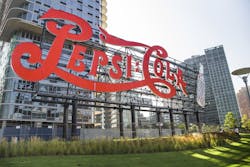Kellogg, PepsiCo named most water efficient in food and beverage industry
BOSTON — Oct. 28, 2015 —A new analysis by Lux Research has found that Kellogg and PepsiCo lead the food and beverage industry, respectively, water use efficiency, according to a press release. While this finding serves as an important metric for long-term profitability and sustainability of these businesses, the report found also that the consumer packaged goods (CPG) sector as a whole needs better information to avoid resource risks.
In its analysis of 4,000 companies, Lux focused on 18 leaders in the CPG sector and reported sustainability numbers on variables such as water usage, energy consumption and waste generation, noted the the release. Kellogg generated more than $1,200 of revenue per kiloliter (kL) of water used, while all diversified food companies averaged $600/kL. Diversified beverage companies averaged under $400/kL, and PepsiCo was the best in its class at about $600/kL.
“Using resource productivity as a new metric for measuring system performance and targeted investments is critical to longer-term profitability in this age of sustainability,” said Ory Zik, Lux Research vice president of analytics and a co-author of the report titled, “Scarcity and Materiality: Benchmarking Resource Productivity in Food and Beverage,” in the release.
“Converting inputs into energy and water equivalents will help establish baselines and benchmarks, but improved reporting on a more granular level is essential to measure impact from the whole ecosystem and in setting corporate strategy,” he added in the release.
In their evaluation of resource efficiency in CPG, Lux created a new functional metric to weigh the full impact to the ecosystem. Its other findings included:
- Brewers lag behind other beverage makers, which shows the importance of product-level data. Diversified beverage companies average $600/kL, while those in the alcoholic beverage sector saw a much lower lower $250/kL, led by Heineken at over $300/kL. Different product classes inherently use different amounts of water, so reporting at the business unit or product level is necessary for true comparisons.
- Looking at the metric of energy usage, both food and beverage companies average about $12,000 in revenue per megawatt hours (MWh) of electricity used. The best in class in this sector is the J.M. Smucker Co., growing from about $14,000/MWh in 2010 to about $18,000/MWh in 2013 — likely due to infrastructure improvements it began in 2010.
- Full risks have not been assessed. Most companies only report partial information on resource use and may remain unaware of the full risks they face. For example, a beverage company with a water use ratio of 3:1 in its own operations might find its ratio 10 times or more higher if it takes the entire supply chain into account, implying significantly higher risks. Additionally, because water is such a local issue — the value of a liter of water in California is different than in upstate New York — companies cannot quantify their resource risks unless they use accurate geospatial analytics.
The report is part of the Lux Research Food and Nutrition Intelligence and the Water Intelligence services.
Click here to read the entire release.
